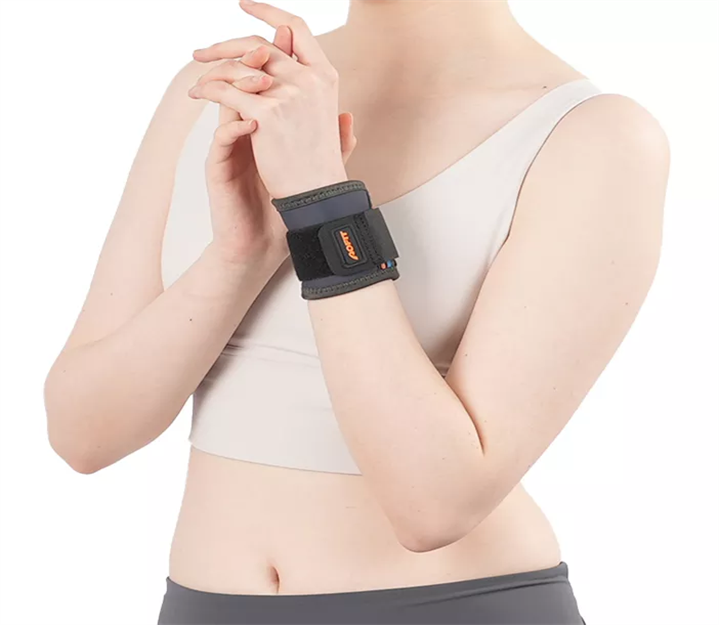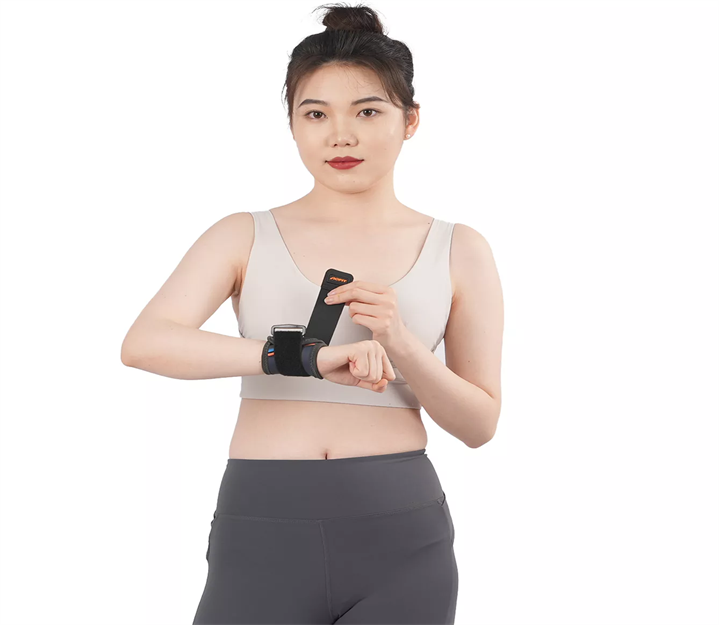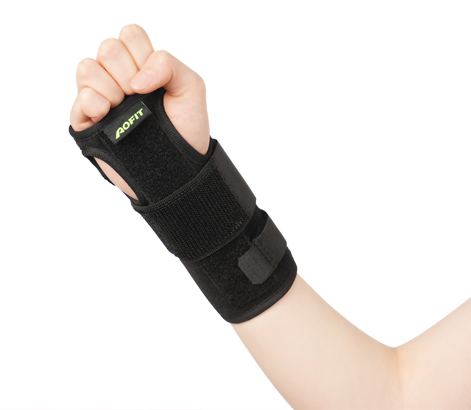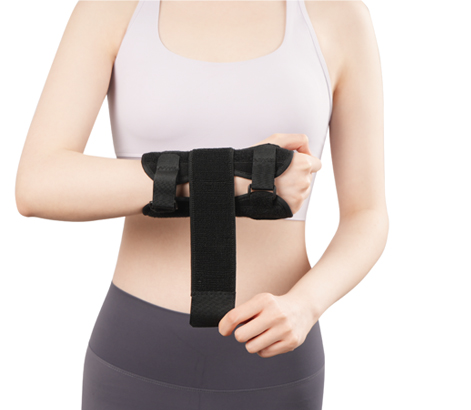Wrist injuries can be painful and disabling, especially if you are an active person or have a physically demanding job. In such cases, wrist support or a brace can provide you with the necessary support and protection needed to prevent further damage and aid in the healing process.
There are many types of wrist supports available on the market that offer different levels of support and protection. Two common types of wrist support are wrist braces and wrist braces with thumb protectors. In this article, we will discuss the differences between these two types of support and the benefits of wearing a wrist support.
What is a Wrist Brace
A wrist brace is a device that provides support and compression to the wrist joint. It is designed to restrict the movement of the wrist, which can be beneficial for those suffering from conditions such as sprains, strains, and carpal tunnel syndrome.
Benefits of Wrist Braces
Provides stability and support to the wrist joint
Can help reduce pain and inflammation
Can prevent further injury or damage
Can be worn during physical activity


What is a Wrist Splint
A wrist splint is a device that immobilizes the wrist joint. It is typically used for more severe injuries, such as fractures or dislocations, as it restricts all movement of the wrist.
Benefits of Wrist Splints
Provides complete immobilization of the wrist joint
Can help promote healing of more severe injuries
Can be customized to fit the specific needs of the patient


Choosing the Right Option for You
When deciding between a wrist brace and a splint, it is important to consider the severity of your injury and your specific needs. If you are experiencing mild to moderate pain and inflammation, a wrist brace may be the best option. However, if you have a more severe injury or require complete immobilization of the wrist, a wrist splint may be the better choice.
The Benefits of Wearing a Wrist Support
Regardless of which type of wrist support you choose, wearing one can provide many benefits. Here are some of the top benefits of wearing a wrist support:
1. Reduces Pain and Discomfort
Wrist supports are designed to reduce pain and discomfort associated with various conditions such as carpal tunnel syndrome, arthritis, and wrist strains. By reducing the amount of stress placed on the wrist joint, a wrist support can help alleviate pain and discomfort, allowing you to perform activities with less discomfort.
2. Prevents Further Injury
Wrist injuries can be debilitating and take a long time to heal. Wearing a wrist support can help prevent further damage to the wrist joint and surrounding tissues. This is especially important for athletes or those who perform physical labor, as they are more susceptible to wrist injuries.
3. Provides Support and Stability
A wrist support provides support and stability to the wrist joint, reducing the risk of further injury. This is particularly important for those who have weakened wrist joints due to a previous injury or medical condition.
4. Improves Circulation
Wearing wrist support can help improve circulation to the wrist joint and surrounding tissues. This increased circulation helps to reduce swelling and inflammation, promoting faster healing of the injured tissues.
5. Enhances Performance
For athletes, wearing wrist support can help enhance their performance by providing the necessary support and stability needed to perform at their best. It can also reduce muscle fatigue, allowing for longer periods of activity.
Best Practices and Care for Your Support
Wearing support can help alleviate pain, provide support, and speed up the healing process. Whether you are recovering from an injury, suffer from a medical condition, or just need extra support during physical activities, proper care and use of your support are essential for optimal results.
1. Hand Wash and Air Dry the Support Regularly
Like any other piece of clothing, your support needs regular cleaning to remove sweat, dirt, and bacteria buildup. Washing your support by hand is the best option to prevent any damage to the material or structure.
To hand wash your support, use a mild detergent and lukewarm water. Gently rub the support to remove any dirt or stains, and rinse thoroughly. Avoid using hot water or bleach as they can damage the material and affect the support's elasticity.
After washing, wring out the excess water, and let it air dry in a cool, shaded area. Do not put it in the dryer or expose it to direct sunlight or high heat as it can deform the support or cause it to lose its shape.
2. Avoid Extreme Activities That May Place Undue Stress on Its Infrastructure
Your support is designed to provide stability and support to a specific area of your body. However, it is not meant to endure extreme physical activities or excessive strain.
3. Avoid any activities that may put undue stress on your support or cause it to stretch or tear. Examples of such activities include weightlifting, heavy lifting, high-impact sports, or sudden movements.
If you are unsure about the suitability of your support for a particular activity, consult with your doctor or healthcare professional before engaging in it.
4. Remove the Support After One Hour of First Use to Check for a Reaction to the Material and Ensure the Correct Pressure
The first hour of wearing new support is crucial to assess its effectiveness and ensure that it does not cause any adverse reactions to your skin or body.
After wearing your support for one hour, remove it and check for any signs of irritation, rash, or discomfort. Also, check if you are applying the correct amount of pressure to the affected area as per your doctor's recommendation.
If you notice any adverse reactions or are unsure about the correct pressure, consult with your doctor or healthcare professional before continuing to use the support.
5. Gentle exercises might be beneficial. Speak with your doctor to determine what is best for you.
Gentle exercises, in addition to wearing support, can help strengthen the damaged region, increase mobility, and speed up the healing process.
However, before beginning any fitness plan, you should contact your doctor or a healthcare expert, especially if you have a medical condition or an accident.
Your doctor can prescribe the best workouts for your unique needs and track your progress to ensure you get the best outcomes.
6. When you see signs that your support is no longer functional, replace it.
Gentle exercises, in addition to wearing support, can help strengthen the damaged region, increase mobility, and speed up the healing process.
When you see signs that your support is no longer functional, replace it.
7. The metal palmar bar is intended to maintain your wrist in a neutral posture. It may be customised to meet your specific needs.
If you're using a wrist brace, it's very probable that it has a metal palmar bar. This bar is intended to keep your wrist in a neutral posture and may be modified to meet your specific needs. To properly adjust the palmar bar, be sure to follow the instructions included with your support.
8. Consult your doctor if the pain, injury, or disease persists.
Finally, if you are having continuous discomfort, injury, or a medical problem, you should see your doctor. They can advise you on the finest sorts of support to employ and assist you.
Conclusion
Finally, wrist braces and splints both play crucial roles in the treatment of wrist injuries. You may speed up the healing process and avoid future harm by studying the benefits of each choice and selecting the best one for your personal requirements. We hope you found this material useful in making your selection.
Wearing a sports wrist support, regardless of the kind, can give several advantages such as lowering pain and discomfort, preventing future damage, providing support and stability, boosting circulation, and improving performance.